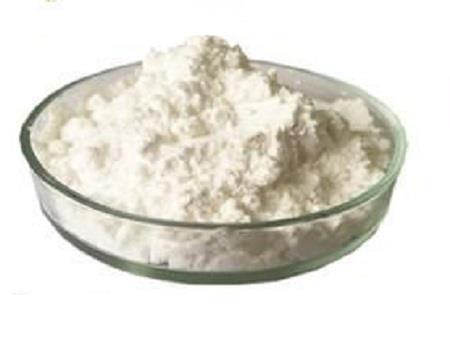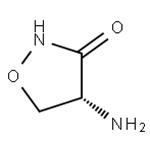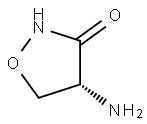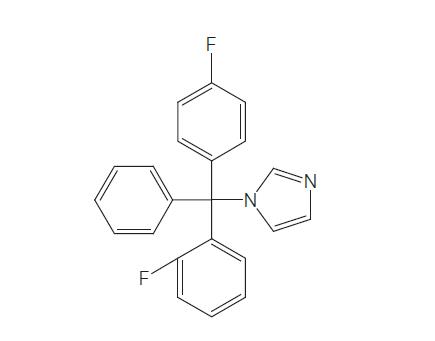Mechanism of action of Cycloserine
Cycloserine was isolated by independent investigators in the early 1950s from cultures of Streptomyces orchidaceus and S. garyphalus. Racemic cycloserine can be synthesized but the active antibiotic, the D-stereoisomer, is usually produced from a strain of S. orchidaceus. It is a crystalline substance of low molecular weight (102.09 g/ mol) with a chemical structure of D-4-amino-3-isoxazolidinone. The neurotoxicity of cycloserine has limited its use and prevented the development of widespread cycloserine resistance, allowing cycloserine to remain as a valuable second-line agent for the treatment of drug-resistant tuberculosis.

Mechanism of action
The peptidoglycan of all bacterial cell walls, including the mycobacteria, is made of linear chains of alternating N-acetylglucosamine and N-acetylmuramine that are cross-linked by peptide bridges, of which D-alanine is a key component. Cycloserine is an analog of D-alanine and is thought to act by competitively inhibiting at least two bacterial enzymes that either supply D-alanine for or incorporate D-alanine into these essential peptide bridges: alanine racemase, encoded by alr and D-alanyl D-alanine ligase, encoded by ddl. Inactivation of Alr and Ddl in M. smegmatis increases sensitivity to cycloserine. In vitro, the supplementation of culture media with D-alanine overcomes the inhibitory effect of cycloserine on S. aureus, E. coli , and some mycobacteria. There may also be other targets in the peptidoglycan synthetic pathway or elsewhere but the lethal action of cycloserine appears to be on D-alanyl D-alanine ligase.
Bioavailability
Cycloserine is a small molecule with a structure similar to the amino acid serine and is almost completely absorbed from the gastrointestinal tract, leaving only trace amounts in feces. Serum half-life is 10 hours.
Excretion
Sixty-five percent of a single dose of cycloserine is cleared by renal excretion, with 50% appearing unchanged in urine within 24 hours. Elimination half-life is 12 hours. Thirty-five percent appears to be metabolized to unknown metabolites and not excreted, although it is not clear where this occurs.
Toxicity
The main toxicity of cycloserine is to the central nervous system (CNS). During treatment for tuberculosis, up to 50% of adult patients receiving 1 g/day cycloserine experience some neurologic symptoms, which may include convulsions, somnolence, confusion, hyperreflexia, headache, tremor, vertigo, paresis or drowsiness. Cycloserine also causes psychiatric manifestations in 10–50% of individuals that may include hallucinations, anxiety, depression, euphoria, behavioral disorders, suicidal ideation, or suicide attempts. Cycloserine should therefore be used with caution or avoided in patients with epilepsy, severe depression, high alcohol intake, anxiety, or psychosis or, due to drug accumulation, in those who have significant renal impairment. Much of the CNS toxicity of cycloserine is explained by its direct, dose-related pharmacologic effect on the brain, where it acts as a partial agonist of the N-methyl D-aspartate (NMDA) glutamate receptor system.
The psychoactive effects of cycloserine have led to its experimental use in neurology and psychiatry for the augmentation of behavior therapy in patients with obsessive–compulsive disorder, to improve memory in patients with Alzheimer’s disease and for the control of the negative symptoms of schizophrenia. In rodents, NMDA receptor activation plays a significant role in consolidation and/or extinction of various emotional and nonemotional memories, particularly consolidation of fear-related memories. In human volunteers, a single oral dose of 500mg has also been shown to enhance fear-related conditioned responses. Alcohol also interacts with NMDA receptors in the brain. Combining alcohol with cycloserine increases the risk of seizure. In 45 healthy volunteers the combination of alcohol (0.8 g/kg) with cycloserine (500 mg) caused a greater reduction in verbal fluency and some aspects of memory function than either drug alone.
Related articles And Qustion
Lastest Price from D-Cycloserine manufacturers

US $0.00/kg2025-11-19
- CAS:
- 68-41-7
- Min. Order:
- 1kg
- Purity:
- 98%
- Supply Ability:
- Customise

US $0.00-0.00/KG2025-05-09
- CAS:
- 68-41-7
- Min. Order:
- 1KG
- Purity:
- 99.0%
- Supply Ability:
- 10000KGS




